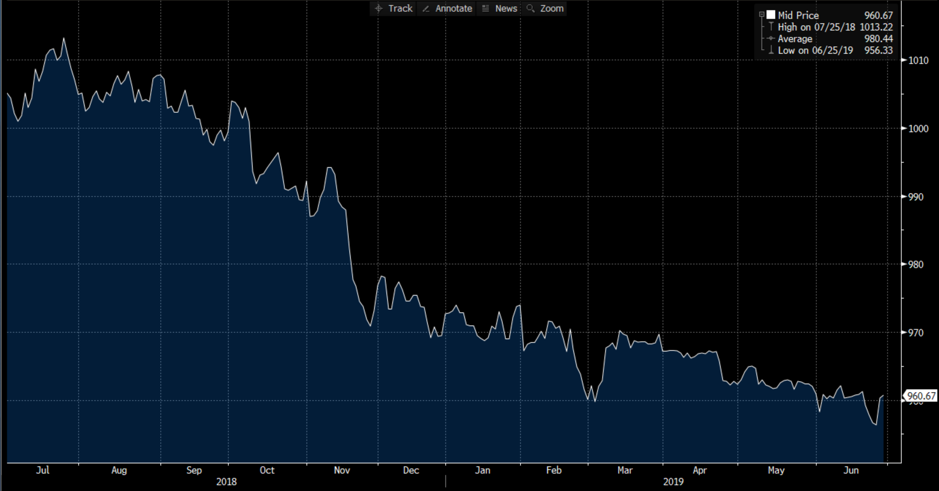
Tough times for quantitative managers
Anyone following the financial media will probably know that the going has been tough for active managers recently, with only a smallish minority managing to outperform the market.
In the quantitative investment space, the pain has been particularly acute, with JP Morgan recently stating than only around 16 per cent of quantitative equity funds were beating their benchmark for the year to date – an extraordinarily low success rate for an investment style that can lay claim to some of the most impressive long-term track records to be found in the investment world.
JPMorgan’s estimate is consistent with other data we have seen showing an unusually difficult run for systematic investors. One example is the Hedge Fund Research Equity Market Neutral Index, which tracks performance for quantitative market neutral funds, and which looks like this:
At a time like this, a fundamental question naturally arises: does the run of weakness indicate that this investment style is broken, or is it part of the ”normal” ebb and flow; a statistical outlier of the sort that will inevitably arise from time to time.
This same question arises in respect of any investment style. Indeed, fundamental investors with a focus on quality are facing similar questions right now. However, in the case of quantitative investing it takes on a particular poignance and, I think, sheds some light on the human condition as experienced by investors.
What makes this example interesting is the tension between the emotional and the rational. Quantitative investing doesn’t have the natural charisma of some other investment styles – it doesn’t provide satisfying explanations for why yesterday’s investment idea didn’t work out, and it doesn’t offer engaging stories about why today’s investment idea is going to be the next Uber/Amazon/Facebook. It has very little to say about when conditions might improve, and why.
This is a challenging proposition for many investors. Faced with a strategy that isn’t working, the natural instinct is to bail out, and that is what quantitative managers have seen. Outflows are a fact of life for any manager experiencing a run of weak performance, but for quantitative managers, unable to look investors in the eye and say: “this is why next quarter will be different,” the effects can be particularly acute.
At the same time, the data and evidence that can be brought to bear in support these strategies often is compelling; far more so than for other investment styles. In most cases, a properly-constructed[1] back test for a sound quantitative strategy will show clearly that the strategy works well on average, but that performance is variable – sometimes very strong, sometimes very weak. There are some very successful strategies out there, but approximately none of them work all the time.
Faced with one of the inevitable periods of weakness from a quantitative investment strategy then, investors are pulled in two directions. The purely rational self understands that such periods are a fact of life because the data shows it to be so. The more instinctive, human self, lacking an engaging explanation for what has happened, wants to pull away.
There is a certain amount of self-reinforcement that comes with this. As investors withdraw capital from a particular investment style, the selling pressure tends to exacerbate the performance issue and adds to the emotional challenge, further extending the cycle. The same thing happens in reverse, of course, with a run of good performance leading to inflows and buying pressure, further reinforcing the cycle of good performance.
The best course of action is often to ignore the short-term ebb and flow and focus on something more constructive. He certainly wasn’t referring to quantitative investing when he said this, but in traditional style, Buffett nailed it when he said: “The stock market is a device for transferring money from the impatient to the patient.”
[1] Admittedly, this is a reasonably important qualification.

Thanks Tim
Can you please define ‘quantitative investment’ and ‘quantitative equity’?
Michael
Hi Michael. You can split equity investment analysis into two broad categories: Fundamental analysis, which relies on human judgement to make the investment decisions, and Quantitative analysis, which relies on computer models and statistical methods. At MIM, we use quantitative methods to help us identify promising candidates for fundamental research, and we also run a pure quantitative fund, being the Montgomery Alpha Plus Fund.